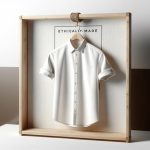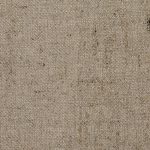Upholstery costs in 2024 vary widely based on your furniture’s size, fabric type, and complexity. Expect to pay $400 to $2,500 for common pieces like chairs or sofas, with natural fibers and intricate designs increasing the price. Labor includes removing old fabric, repairs, and precise sewing, which adds to the total. Choosing durable, budget-friendly fabrics and getting multiple quotes can help keep costs down. Keep exploring to understand all the factors that shape your upholstery budget.
Table of Contents
Key Takeaways
- Upholstery costs vary by fabric type, with natural fibers costing more than synthetics.
- Sofas typically range from $800 to $2,500, while chairs cost between $400 and $1,200.
- Labor includes fabric removal, frame repair, padding replacement, and precise sewing and fitting.
- Choosing durable, budget-friendly fabrics and DIY prep work can significantly reduce overall expenses.
- Getting multiple quotes and scheduling off-peak projects help secure better upholstery pricing.
Factors That Influence Upholstery Costs
While many factors affect upholstery costs, understanding the main ones can help you budget effectively.
First, the type of fabric you choose plays a huge role. Natural fibers like leather or linen tend to cost more than synthetic options.
You’ll also want to take into account the complexity of the piece—reupholstering a simple chair is usually cheaper than a large sectional with intricate details.
Labor costs vary depending on your location and the upholsterer’s experience, so expect higher prices in urban areas or for highly skilled professionals.
Additionally, if your furniture needs new padding or structural repairs, that will add to the total.
Average Price Range for Common Furniture Pieces
You can expect upholstery costs to vary widely depending on the type of furniture you have.
Different pieces require different amounts of fabric, labor, and detail, which all impact the final price.
Fabric requirements, labor intensity, and design details all influence the overall upholstery cost.
Here’s a quick look at average price ranges you might encounter:
- Sofas and Sectionals: $800 to $2,500 — These larger pieces need more material and labor, so expect higher costs.
- Chairs and Recliners: $400 to $1,200 — Smaller than sofas but still may involve complex work, especially with reclining mechanisms.
- Ottomans and Benches: $200 to $700 — Generally less expensive due to size, but style and padding can affect price.
Knowing these ranges helps you plan your budget accurately before starting your upholstery project.
Choosing the Right Fabric for Your Budget
Understanding the average costs for different furniture pieces gives you a foundation to make smarter choices when selecting fabric.
When budgeting, consider that natural fibers like cotton or linen often cost less but may wear faster. Synthetic fabrics like polyester or microfiber offer durability and stain resistance at a moderate price.
For a luxury feel, leather and high-end velvet drive costs up but provide longevity and style. Don’t forget to factor in fabric weight and pattern complexity, as heavier or intricately designed materials usually increase expenses.
Balancing your fabric choice with both budget and lifestyle needs guarantees you get the best value. By prioritizing durability and maintenance alongside cost, you’ll pick a fabric that looks great without breaking the bank.
Labor Costs and What They Include
Because labor plays an essential role in upholstery costs, knowing what it covers helps you plan your budget better.
Labor charges reflect the skill and time needed to transform your furniture, beyond just materials. When you hire a professional upholsterer, their work typically includes:
Labor charges cover the skill and time professionals invest to expertly transform your furniture beyond just materials.
- Removing old fabric and padding: Taking off worn materials carefully to avoid damaging the frame.
- Repairing the frame and springs: Fixing any structural issues to guarantee durability and comfort.
- Cutting, sewing, and fitting new fabric: Precisely handling fabric to match your furniture’s shape and style.
These tasks require expertise, patience, and specialized tools, which is why labor can considerably influence your final upholstery bill.
Understanding these elements helps you appreciate the value behind the cost.
Tips to Save Money on Upholstery Projects
Although upholstery projects can get costly, there are smart ways you can cut expenses without sacrificing quality.
Start by choosing durable, budget-friendly fabrics instead of high-end materials. You can source discounted or remnant fabric from local stores or online outlets.
Also, consider tackling simple tasks like removing old fabric or basic cleaning yourself to reduce labor costs. Get multiple quotes from upholsterers and compare services to find the best value.
Reusing existing cushions or frames in good condition can save you money too.
Finally, plan your project during off-peak seasons when professionals might offer lower rates.
Frequently Asked Questions
How Long Does the Upholstery Process Typically Take?
Wondering how long upholstery takes? It usually lasts between a few days to a couple of weeks, depending on the project’s complexity and materials. You’ll want to plan accordingly to enjoy your refreshed furniture sooner!
Can Upholstery Be Done on Antique Furniture?
Yes, you can upholster antique furniture. You’ll want a skilled upholsterer who respects its history and uses appropriate materials to preserve its value and character while giving it a refreshed, functional look.
Is It Better to Upholster or Buy New Furniture?
Why replace something with character when you can refresh it? You’ll save money, reduce waste, and keep sentimental value by upholstering. But if your furniture’s outdated or damaged beyond repair, buying new might be smarter.
What Types of Padding Materials Are Used in Upholstery?
You’ll find foam, cotton batting, polyester fiberfill, and down feathers commonly used as padding materials in upholstery. Each offers different comfort and durability, so choose based on your furniture’s needs and your personal comfort preferences.
Are There Eco-Friendly Upholstery Fabric Options Available?
You’re standing at a green crossroads—yes, eco-friendly upholstery fabrics like organic cotton, hemp, and recycled polyester are available. They’re great choices if you want to reduce your environmental footprint while revitalizing your furniture.
- Recycling Nonwoven Fabrics: Is It Possible? - July 11, 2025
- Recycling Nonwoven Fabrics: Is It Possible? - July 11, 2025
- Recycling Nonwoven Fabrics: Is It Possible? - July 11, 2025







